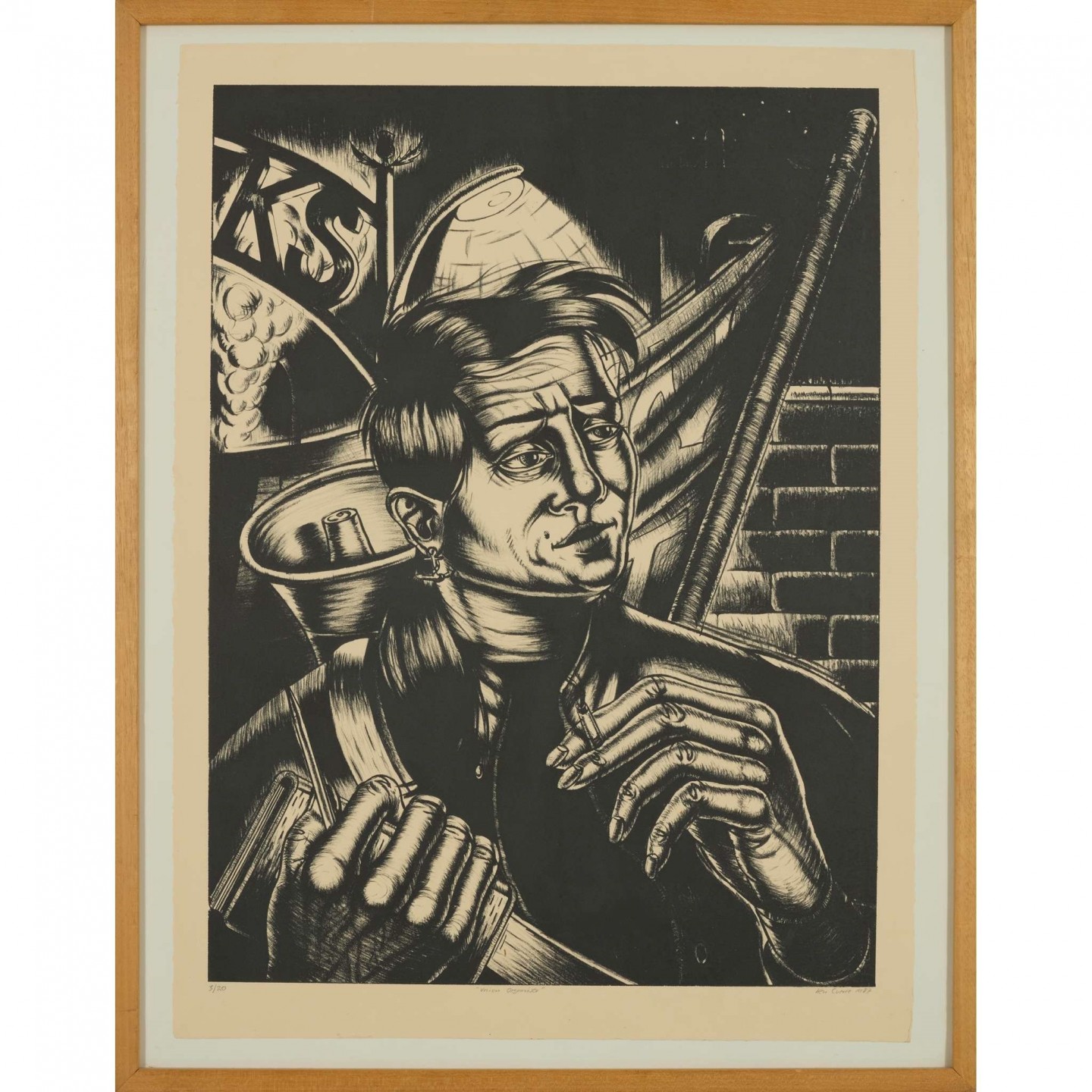DESCRIPTION
The Calton Activist is a striking artwork by Scottish artist Ken Currie (b. 1960), created using conté and pastel. It portrays a red-haired man with tattooed skin, clutching a book in one hand and restraining a black dog with the other. Set against a dark, industrial Glasgow backdrop - arched bridges, brick walls, and shafts of light cutting through shadows - the composition evokes an atmosphere of tension, surveillance, and unrest. The rich, fiery palette and dramatic use of chiaroscuro lend the figure a near-mythic presence. The work likely alludes to the 1787 Calton Weavers’ Massacre, one of the earliest industrial disputes in Scottish history. On 3 September 1787, weavers from Calton - a once-prosperous handweaving community just outside Glasgow - were shot and killed by the military during a protest against wage cuts and lockouts. As mechanisation and a growing labour force drove down wages, tensions escalated. When initial attempts by magistrates to suppress the protests failed, they returned to Calton with a detachment of the 39th Regiment, resulting in six fatalities. The massacre is now recognised as a foundational moment in the history of trade unionism in Scotland. Currie created this drawing in the same year as his oil painting The Weavers’ Struggles… The Calton Weavers’ Massacre (1987) for the People's Palace in Glasgow to mark the bicentenary of the historical event. In this context, The Calton Activist may be read as a symbolic tribute to the weavers’ legacy - a figure embodying working-class resistance and the ongoing struggle for workers’ rights.
DETAILS
-
Artist
Ken Currie
-
Date
1987
-
Medium
Conte and pastel on paper
-
Object number
3319
-
Marks
Signed and dated '87 lower right, signed, dated and inscribed with title verso, conte and pastel on paper
-
Copyright
©Image courtesy of the artist
ARTIST PROFILE
Ken Currie, born 1960
Ken Currie was born in North Shields, Tyne and Wear, to Scottish parents. After studying social sciences in Scotland he trained as a painter at Glasgow School of Art from 1978 to 1983. Currie soon achieved prominence as a result of his assertive and graphic images of working-class life. A thoughtful political artist, he sought in his early work to highlight the plights of the whole communities, especially those that were seen as the victims of industrial and urban decay. The Glasgow shipyards, the protest march, the slums and working men's pubs have been his subjects.






